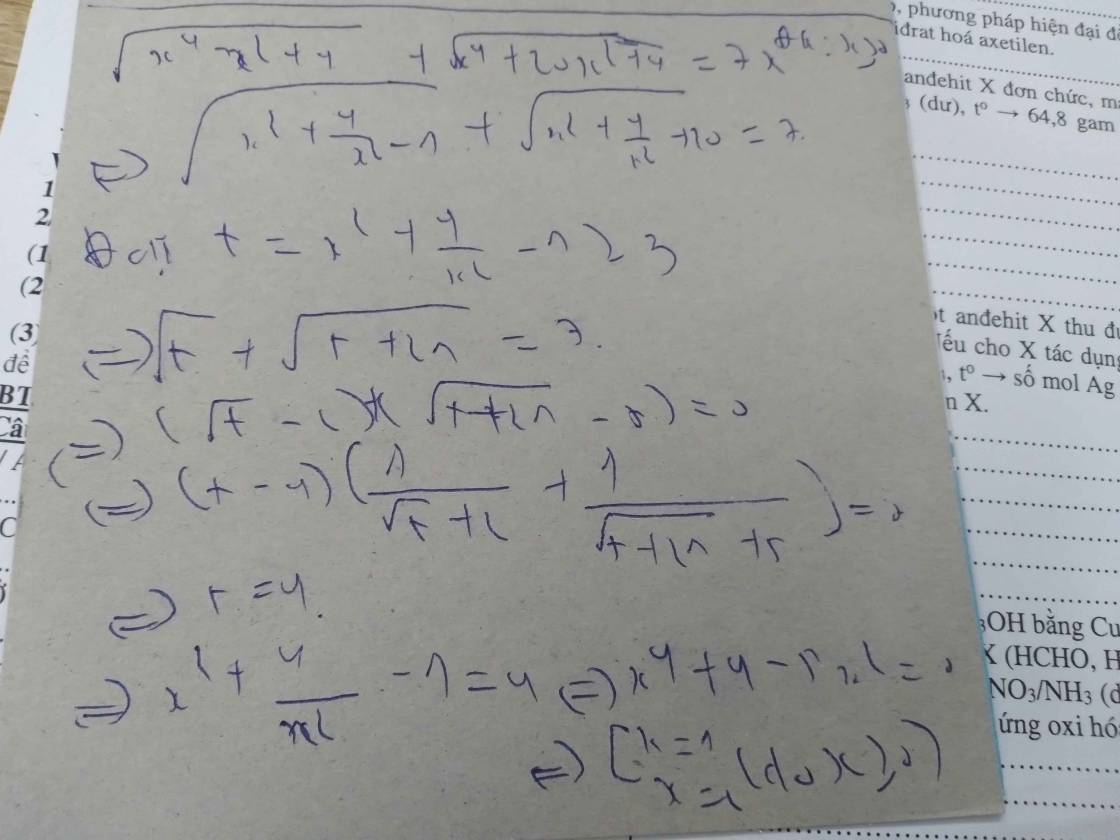
Hãy nhập câu hỏi của bạn vào đây, nếu là tài khoản VIP, bạn sẽ được ưu tiên trả lời.





ĐKXĐ: \(-1\le x\le1\).
Đặt \(x^2=a\left(0\le a\le1\right)\).
PT đã cho được viết lại thành:
\(13\sqrt{a-a^2}+9\sqrt{a+a^2}=16\).
Áp dụng bất đẳng thức AM - GM cho hai số thực không âm ta có:
\(a+4\left(1-a\right)\ge2\sqrt{a.4\left(1-a\right)}\)
\(\Rightarrow\sqrt{a-a^2}\le1-\dfrac{3}{4}a\)
\(\Rightarrow13\sqrt{a-a^2}\le13-\dfrac{39}{4}a\); (1)
\(a+\dfrac{4}{9}\left(a+1\right)\ge2\sqrt{a.\dfrac{4}{9}\left(a+1\right)}\)
\(\Rightarrow\sqrt{a\left(a+1\right)}\le\dfrac{13}{12}a+\dfrac{1}{3}\)
\(\Rightarrow9\sqrt{a+a^2}\le\dfrac{39a}{4}+3\). (2)
Cộng vế với vế của (1), (2) ta có \(13\sqrt{a-a^2}+9\sqrt{a+a^2}\le16\).
Mặt khác từ pt đã cho ta có đẳng thức phải xảy ra.
Do đó đẳng thức ở (1) và (2) cũng xảy ra
\(\Leftrightarrow\left\{{}\begin{matrix}a=4\left(1-a\right)\\a=\dfrac{2}{3}\left(1+a\right)\end{matrix}\right.\Leftrightarrow a=\dfrac{4}{5}\Leftrightarrow x=\pm\sqrt{\dfrac{4}{5}}\) (TMĐK).
Vậy...


Bạn tách phần trong căn ra, mình làm mẫu nhé
x +2 căn ( x-1)= ( x-1) +2 căn (x-1) +1
= ( căn(x-1) -1)^2
k nha



\(\sqrt{x^2-x+2}=x\left(1\right)\)
Ta thấy : \(x^2-x+2>0\) nên không cần ĐKXĐ.
\(\left(1\right)\Leftrightarrow x^2-x+2=x^2\left(ĐK:x\ge0\right)\)
\(\Leftrightarrow x^2-x+2-x^2=0\)
\(\Leftrightarrow-x+2=0\)
\(\Leftrightarrow-x=-2\)
\(\Leftrightarrow x=2\left(tm\right)\)
Vậy pt có tập nghiệm : \(S=\left\{2\right\}\)
\(\sqrt{x^2-x+2}=x\)
Bình phương 2 vế pt, ta được :
\(x^2-x+2=x^2\)
\(\Rightarrow x^2-x^2-x=-2\)
\(\Rightarrow-x=-2\)
\(\Rightarrow x=2\)
Thay giá trị trên vào pt, ta thấy \(x=2\) thỏa.
Vậy \(S=\left\{2\right\}\)